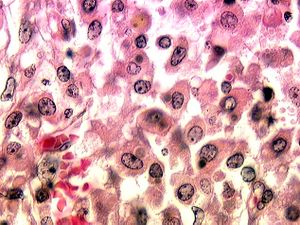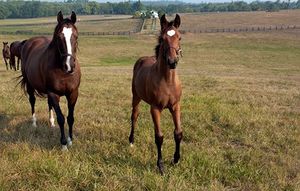Rhodococcus equi
Classification
Bacteria/Actinobacteria/Actinobacteria; Actinobacteridae; Actinomycetales; Corynebacterineae; Nocardiaceae
Genus Species
Rhodococcus; Rhodococcus equi
Description and Significance
Rhodococcus equi, originally discovered in horses by Magnusson, is a pathogen that is known to be able to affect animals and humans [1].
Structure, Metabolism, and Life Cycle
Interesting features of its structure; how it gains energy (how it replicates, if virus); what important molecules it produces (if any), does it have an interesting life cycle?
Ecology and Pathogenesis
Natural habitat (soil, water, commensal of humans or animals?)
If relevant, how does this organism cause disease? Human, animal, or plant hosts? Important virulence factors, as well as patient symptoms.
References
[1] Prescott, John F. 1991. '"Rhodococcus Equi": an Animal and Human Pathogen". '"Clinical Microbiology Reviews. 4 (1)': 20-34. http://www.ncbi.nlm.nih.gov/pmc/articles/PMC358176/pdf/cmr00042-0036.pdf
Author
Page authored by Mattie Hogg, student of Mandy Brosnahan, Instructor at the University of Minnesota-Twin Cities, MICB 3301/3303: Biology of Microorganisms.


